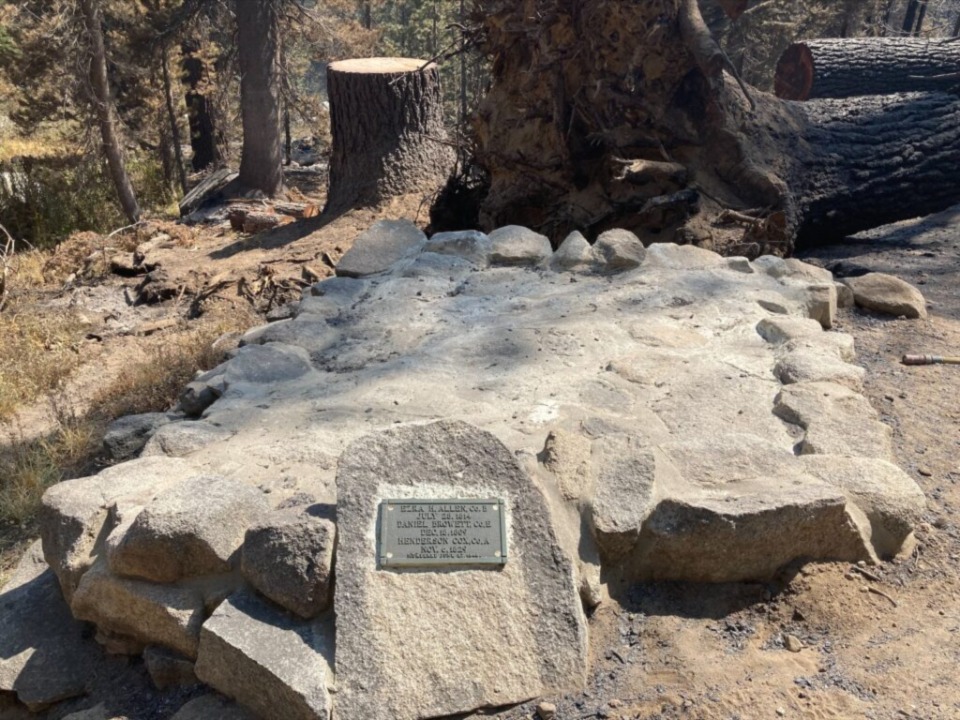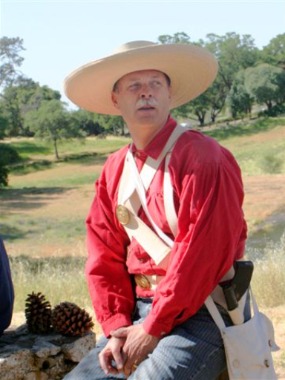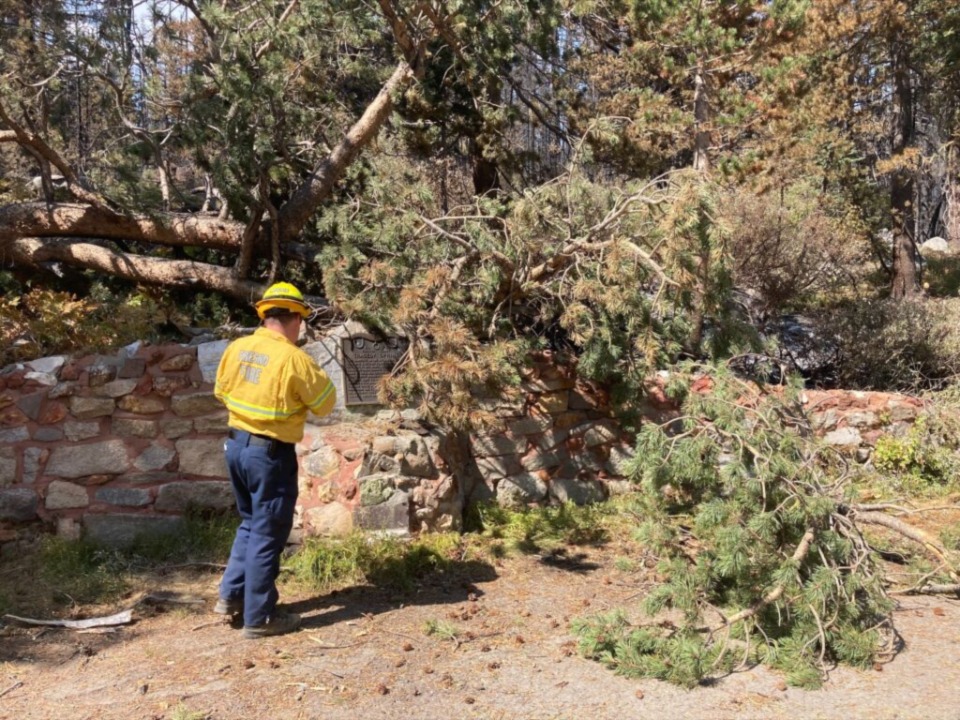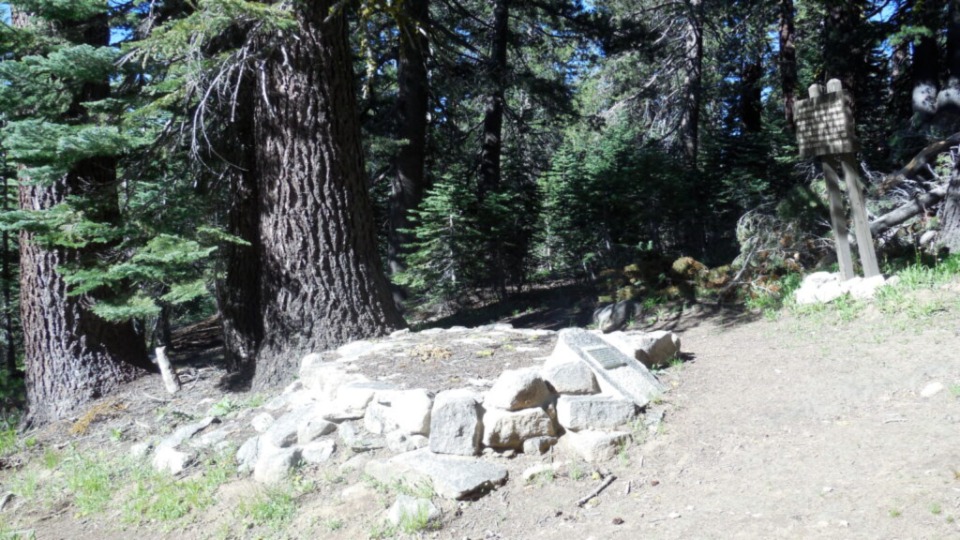
This story appears here courtesy of TheChurchNews.com. It is not for use by other media.
By Dan Bammes, Church News
The huge Caldor Fire has burned more than 217,000 acres and destroyed almost 1,000 structures, forcing thousands to evacuate homes near South Lake Tahoe, California, and in several other communities.
But the fire also burned through a mostly forgotten historic site in the El Dorado National Forest where three members of the Mormon Battalion were killed in 1848 as they were scouting a route through the mountain range and where they are still buried. The site, called Tragedy Spring, had already been damaged by a windstorm earlier this year. It will likely take years — and commitment from many volunteers — to restore it.
The three battalion members — Henderson Cox, Daniel Browett and Ezra Allen — are buried beneath a stone cairn near the spot where their bodies were found by other members of the battalion who came along several days after the three were killed. The cairn has been rebuilt several times, most recently by volunteers from The Church of Jesus Christ of Latter-day Saints and the California Pioneer Heritage Foundation based in Placerville.
Peter Guilbert, a member of the Lake of the Pines Ward in Auburn, California, is a service missionary in the Sacramento District of the California Living History Mission. He has worked for years to preserve the Tragedy Spring site and to help others understand its significance.

The windstorm in winter 2021 brought down a large tree growing next to the gravesite, leaving its roots extending more than 10 feet in the air. It damaged the rock cairn, which volunteers were able to repair. They were not able to move the tree. Guilbert said they brought in a professional forester who was able to tip one tree upright again and cut through another, but the large tree next to the graves remains where it fell.
Falling trees also damaged the pipes and the cistern that carried water from the spring that gives the site its name. They’ve also been repaired, though Guilbert said this is the first year anyone can remember when it’s been so dry that the spring stopped flowing.
About his feelings for the site, Guilbert says, “It’s like going to a graveyard, seeing the place where people served faithfully in the Church and the country, and we appreciate their service.”
While plans for additional restoration of the site were in the works, the Caldor Fire was moving through the El Dorado National Forest in the Sierra Nevada. For a time, it seemed the wildfire might stay away from Tragedy Spring, but during the weekend of September 4-5, it burned through the areas.
Jonathan Pierce, a public information officer with the California Department of Forestry and Fire, was able to go to the spring a few days later and sized up the damage: “It was a crown fire in there, which was a pretty severe fire. The fire got up into the trees. Most of the trees [are] already dead. A lot of the trees that still had green foliage will probably die.”
The cambium, the living layer of the trees just under the bark, was “cooked,” he said.
A wooden sign detailing the history of the site was burned, but he said other markers survived, including one placed by the Daughters of Utah Pioneers in 1967.
“The plaque and the stonework along the road there, along Tragedy Spring Road, had some trees down over and around it, but when those are cleaned up, it doesn’t look like any of the plaques or the stonework were damaged,” Pierce said.

Still, Pierce said it will likely be years before the site can be restored, and it will need more help from committed volunteers to make that happen.
“I think with a motivated group and donations and volunteer work, that area around the site of interest, working cooperatively, could be reforested artificially,” he said.
There was no damage to the remains of the three battalion members buried at the site from the falling trees or the fire. But it may be some time before the site again becomes the beautiful, green and peaceful place it once was. Still, as Brigham Young once said of the battalion, “its service will be held in honorable remembrance to the latest generation.”

A version of this story aired on KSL Newsradio on September 9, 2021.
Dan Bammes is a reporter and anchor for KSL Newsradio and a great-great-grandnephew of Henderson Cox.
Copyright 2021 Deseret News Publishing Company